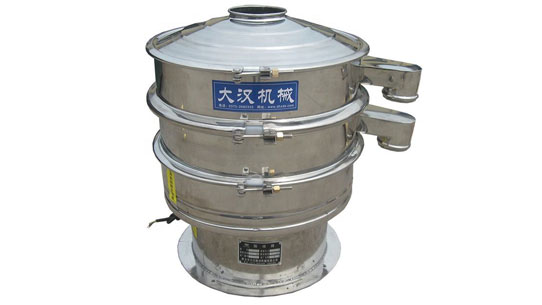Food Grade Vibro Sifter is used in small production requirements: household or small amount of material screening
Monday March-10 2025 13:45:55
How should I choose if I just need to use Food Grade Vibro Sifter for a small amount of material? Can Food Grade Vibro Sifter be used at home? How can we achieve the best cost performance?
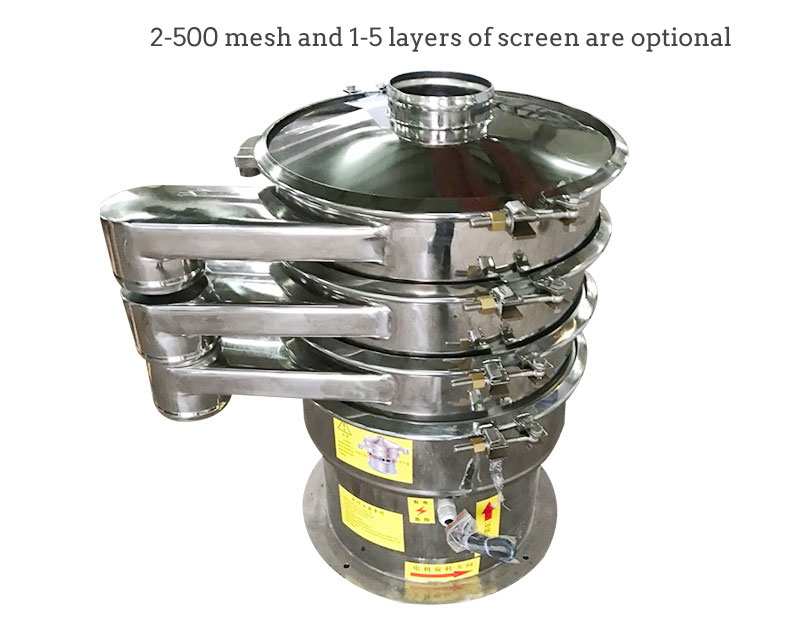
Yes, you can, Food Grade Vibro Sifter can be used in your home or small factory, just choose a small machine.
Small Food Grade Vibro Sifter generally refers to the 400, 600 type 304/316 stainless steel rotary vibrating screen, the diameter of the screen surface is only 350mm, 560mm, the screening structure designed in the vertical direction makes it take up less space, and the purchase cost is only 500$! .
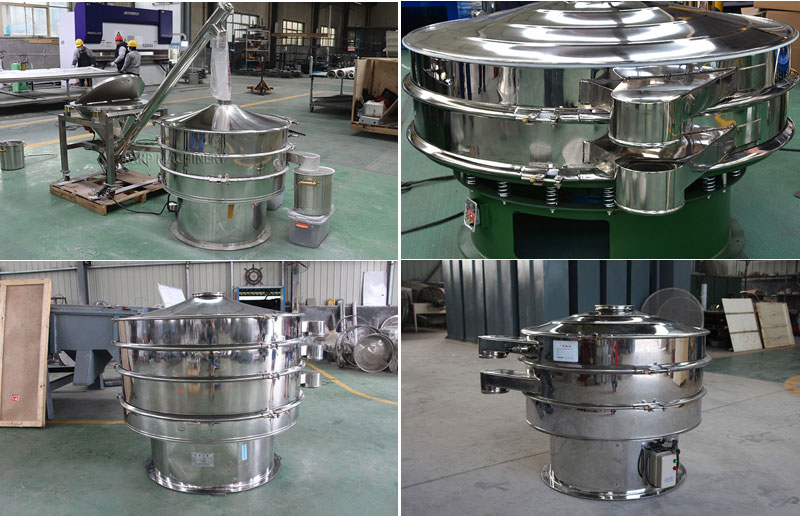
Food Grade Vibro Sifter video
Features of small Food Grade Vibro Sifter
1. Made of 304/316 stainless steel, clean and hygienic, wear-resistant, acid and alkali corrosion resistant, and has a longer service life, especially suitable for household or factory food or other industries that require high hygiene;
2. The body is polished, smooth and without burrs, so it will not hang materials, and it is easier and more convenient to clean. In addition, the bright appearance is more delicate and beautiful;
3. Small size design, the sieve machine is light and compact, suitable for family or factory small output screening (small output below 100kg/h), saves space and is easy to operate, and a single person can move the sieve machine;
4. 2-500 mesh and 1-5 layers of screen are optional, and the number of screen mesh and the number of layers can be freely selected according to the material particle size and particle size separation requirements;
5. It comes with a silica gel cleaning pinball for food, which automatically cleans the screen to prevent material clogging from affecting the screening effect and screening efficiency;
6. The fully sealed design ensures that the materials are hygienic and the environment of the screening site is also maintained.
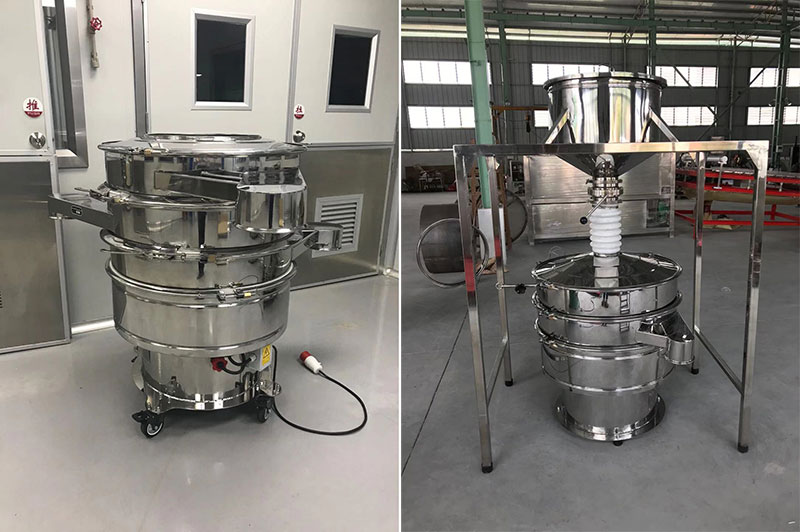
What is the use of food grade vibrating screen in small-scale production such as home or small-scale material screening?
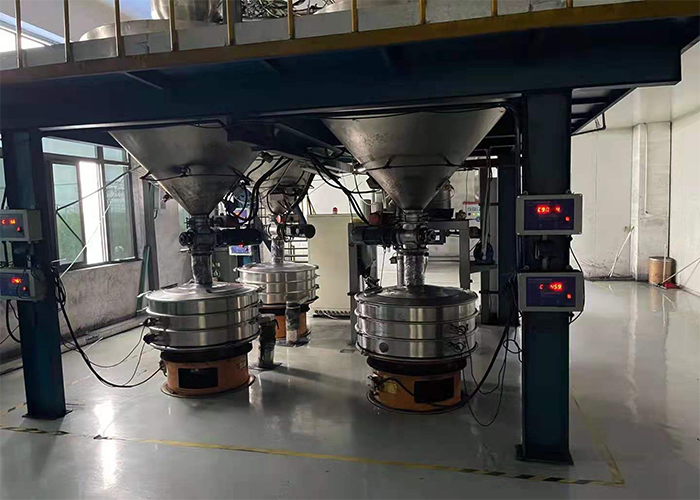
1. Food processing and preparation: Food grade vibrating screen can remove impurities and lumps in flour, separate starch of different particle sizes and some powdered seasonings, remove tea leaves, tea stems, nuts, impurities in grains, moldy particles, etc., separate particles of different sizes, and facilitate preparation and use.
2. Home kitchen application: Food grade vibrating screen can filter pulp and fiber in fruit and vegetable juice, bean dregs in soy milk, and even Chinese medicine before decoction.
3. Laboratory sample screening: In the laboratory, food grade vibrating screen can be used to screen samples of different particle sizes for experimental analysis.
4. Small handicraft workshops: For some small-scale handicraft workshops, such as making some handmade food and medicinal materials, food-grade vibrating screens are also used to ensure product quality.
How to classify a food grade vibro sifter?
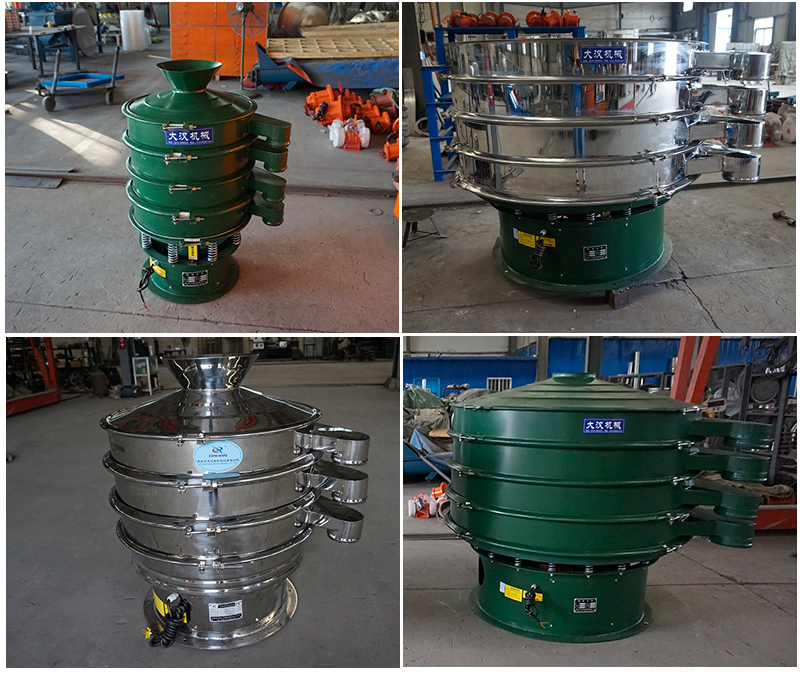
Food-grade vibrating screens come in a variety of different sizes and shapes. Each type is designed to meet specific production needs. Here are the main types:
1. Small production requirements vs. large-scale production requirements
Industrial vibrating screens are used for large-scale production. These machines have large diameters and sturdy structures to meet industrial needs. On the other hand, food-grade vibrating screens can also be used for small-scale production operations, such as home or small amounts of material screening. Industrial equipment has high output rates, while food-grade vibrating screens focus on accuracy. You may see food-grade vibrating screen models with features such as quick screen replacement and easy cleaning.
2. Single-layer sieves vs. multi-layer sieves
Single-layer sieves can separate materials into two grades, while multi-layer sieves can produce six different grades in one operation. Single-layer sieves have larger screens and can handle more materials, but provide some options for grading materials. Multi-layer sieves are more useful because they have a smaller screen diameter and can therefore handle less material.
Why do you need a food grade vibro sifter?

1. Ensure food safety: One of the main difficulties faced by the food processing industry is food safety assurance. Strictly adhere to regulations and standards to prevent contamination and maintain product quality. Maintaining product integrity is essential to ensure that food is safe to eat. This involves implementing comprehensive safety protocols, verifying the quality of raw materials and ingredients, and conducting regular inspections to detect any potential hazards.
2. Strictly screen for impurities: Contaminants such as pesticides, heavy metals or pathogens pose serious risks to consumer health and negatively affect the quality of the final product. These impurities can affect the taste, texture and nutritional value of food. Screening measures must be implemented to detect and remove any potential contaminants in the raw materials before they enter the production process.
3. Improve production efficiency: Efficient production is essential for the food processing industry to remain competitive. Optimize processes, reduce waste and strengthen supply chain management. Overall, maximizing production efficiency is essential for the food processing industry to succeed in a highly competitive market.
4. Equipment maintenance: In order to ensure the smooth operation of food-grade vibrating screens, equipment must be regularly maintained and repaired to minimize unplanned downtime and ensure efficient operation of the equipment.
5. Waste control: Reducing the cost of purchasing new materials or disposing of unused materials, improving the efficiency and productivity of the production process, and reducing food waste can reduce the amount of organic matter sent to landfills.


